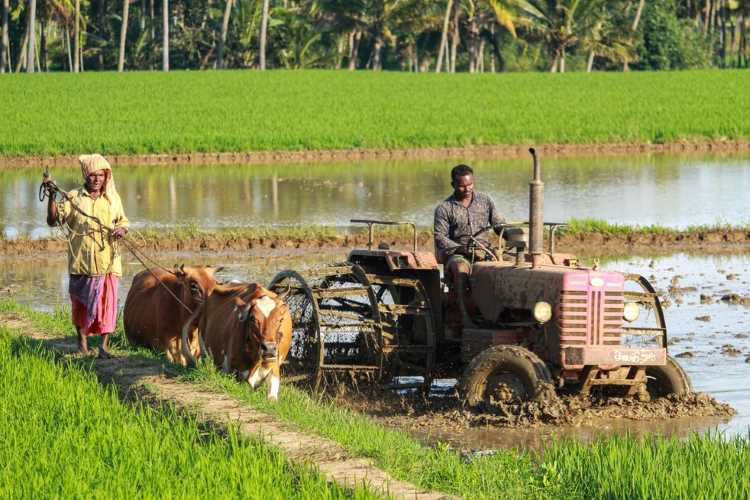
By Nebu John Abraham
Last month, an Elephant died after eating a pineapple laden with crackers in Palakkad District of Kerala. A similar incident was reported from Bilaspur district in Himachal Pradesh on June 6 in which a cow was severely injured. The incidents shocked people and they responded with anger. The first incident was used by vested interests to create a communal divide. In both these cases, farmers were the culprits and animals were the victims. In Himachal, the owner of the animal is a private party while the wild elephant belonged to the forest department of the Kerala government. This article attempts to analyse the incidents using the theory of social cost.
Social cost was a neglected topic among neoclassical economists till Nobel laurate Ronald Coase raised it in his famous article “The problem of social cost”. There is much in common between Coase’s examples and the farmers vs animal conflict in India. Coase’s first example is a conflict of property rights between neighbouring farmers without a fence between their properties. The crop cultivating farmer faces an externality when his neighbour’s cattle destroys his produce. Who violated the rights in this case? Which farmer needs compensation and how much?
READ I India’s migrant labour exodus and the missing trade unions
The second example given by Coase is a conflict between a confectionery unit that is adjacent to a doctor’s consulting room. Doctor needs silence whereas factory operates with noise. Whose rights are more valuable? The third example is a problem of smoke pollution. The defendant built a wall near the plaintiff’s chimney, blocking the smoke passage. Thus, the rights of plaintiff get violated. Does the neighbour have the right to build a wall in his property? Is it not the right for the plaintiff to have a free flow through his chimney?
These problems get resolved through bargaining by parties, says Coase. Both the parties can negotiate under the law and clear property rights by compensating the other party’s losses. This mechanism will drive the system to a pareto optimality where the total gain increases with nobody is at a loss.
Coase himself has complained that he is a much-misunderstood new institutionalist economist. He emphasised that when transaction cost is positive, market imperfection could hamper an optimum efficient bargaining. Search cost, expenses for legal system and enforcement expenses are external. How do the two parties internalise it? Capitalist system believes in the invisible hands of market that ensures the optimal allocations of resources. This concept has severe limitations as unaffordable transaction costs, imperfect information and ambiguous property rights may play spoilers.
READ I Returning migrants: Big trouble awaits Covid-hit Kerala economy
Another challenge for this conception of exchange relations is from the Marxian point of view. The production relation is the allocation method of any society. Thus, if such a relation is the established one, a new allocation method cannot coexist. In a system where private property rights are established, multi-firm decisions are essential. Thus, firms and their profit-oriented decisions are the starting point from where a market is created for exchanges. According to the Marxian view self-interest cannot create a satisfied society for labour class. Thus, the solution in Marxian view is a single firm socialist solution. Actually, the Coasean bureaucratic decision making by several institutions is replaced here by single super firm that does centralised planning to all externalities.
Let’s come back to the death of the animals. There are two parties here. In the case of the elephant the forest department and farmers are the two parties, whereas the Bilaspur case is between two private farmers. Why a negotiation and bargaining did not take place? How long have similar cases been going on? Here are a few problems associated with this.
1. The property rights of forest department and farmers are not clear. Had it been so clear the farmers would not have killed the animals. Assume that the forest department is liable to pay for crop damage. In such a situation farmer would not have bothered about the animals.
READ I Honey I shrunk the middle class, killed the Indian economy
2. There are several farmers affected by crop damages. Who will coordinate for a legal challenge for compensation? Independent farmers who are not affected will not bother about a single farmer’s losses.
3. Such cases drag on for a long time which will be disincentivise farmers from trying for legal solutions.
4. In man vs animal cases, pressure from environmentalists could skew the negotiations against farmers.
5. In some cases people would not be interested in negotiations or will be ready to accept compensation or to relocate. This is mainly due to endowment effect propounded by Daniel Khaniman. People generally have loss aversion. They do not like to lose something even if they are offered a great compensation. People stay in slums may not relocate even if they are offered flats.
READ I India must prepare for a bout of migration by doctors, medical staff
5. Finally, the farmers who find land near the forest area are likely to be very poor. Most of them would have been driven away from towns. As Marxism usually evaluates, individual interest is already a socially determined interest. The rights are given by social conditions independent of individual interest. Selling of their property to those who have ownership of means of production is also an externality created by the capitalist system.
Unless there are clear property titles and free help for negotiations, such gruesome killings will continue to happen. The court may find a scape goat and punish him/her without finding the reciprocity involved in the incidents. In the absence of good institutions, a clearly planned allocation is a better option. A planning authority that gives clear land titles for residence, farming and industry could reduce the transaction cost in such cases.
(Dr Nebu John Abraham is an economist based in Kottayam, Kerala. The views are personal)
